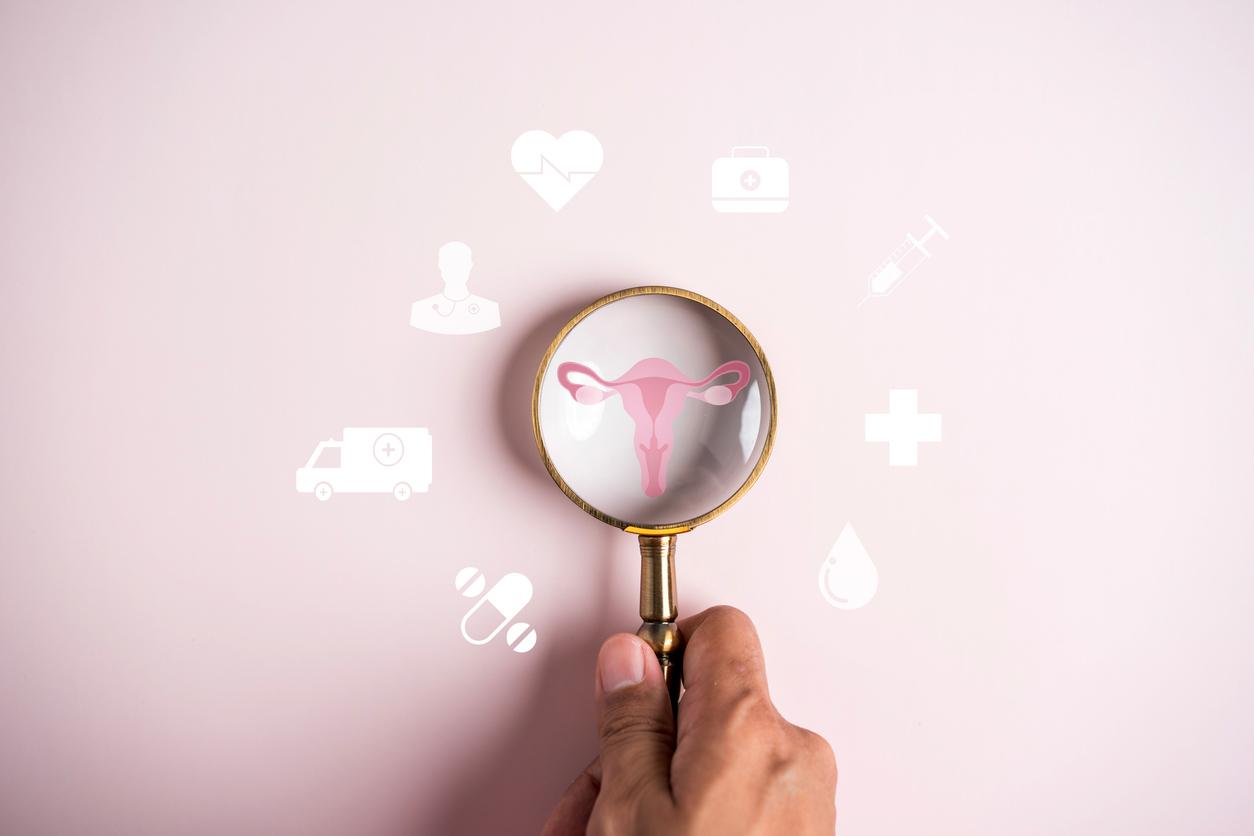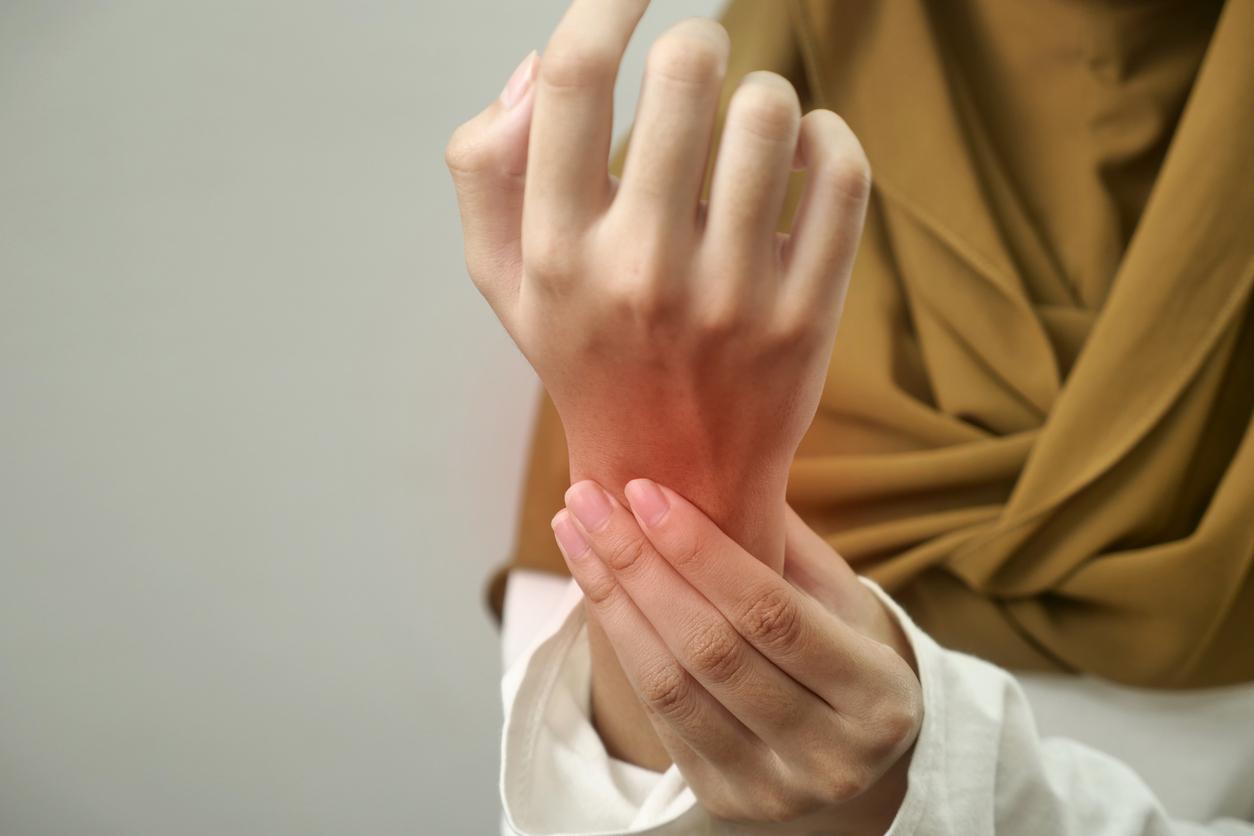What are the mechanisms of osteoporosis?
This disease which literally means “porous bone” affects the skeleton. It often evolves silently, causing a decrease in the density of the bones and a disruption of their internal architecture. A fragility follows which makes the person more vulnerable to fractures. “Bone is a living tissue, which is constantly renewed under the action of numerous hormones (parathyroid hormone, vitamin D, cortisol, etc.), with estrogen in the first place,” explains Professor Thierry Thomas, rheumatologist. Regularly, osteoclasts, bone cells, destroy old bone by digging gaps in it, this is called bone resorption. Then osteoblasts, other bone cells, make new bone by filling in these gaps with a material made of protein, mainly collagen. This new bone tissue will then calcify, this is bone mineralization. Each year, 30% of the spongy bone (notably making up the body of the vertebrae) and 8% of the cortical bone (hard part of the long bones) thus replace old bone. This remodeling occurs spontaneously in small areas, but from the age of 30, the quantity of new bone which replaces the old bone is a little less important. Results : over time, the bone stock is gradually reduced. In addition, at the menopause, estrogen deficiency causes an acceleration of this replacement system. Bone is renewed faster and faster, further increasing bone fragility. In the years following menopause, bone loss accelerates.
Is it inevitable?
THE’osteoporosis does not affect the entire population. By the age of 80, 40 to 50% of women have osteoporosis, compared to 15% of men. For both sexes, bone loss begins around your 30s. While in men it is still around 0.5% per year, in women it accelerates during menopause. The woman thus loses 3 to 5% of her bone capital during the first three years following this event, the estrogen hormone deficiency causing overactivity of the osteoclasts, the bone-destroying cells. During the following five to ten years, the phenomenon slows down and the annual bone density loss is limited to 1 to 2%, before stabilizing around 0.5 to 1% per year beyond. In some people, the process of bone loss is more intense, in others it develops on a less important starting bone capital. Osteoporosis then appears. One in two or three women, and one in five men, will have a fracture related to this disease.
Is it hereditary?
Bone capital is acquired around the age of 15 to 20 and is maintained until menopause. There is not a single gene forosteoporosis, but heredity plays an important role. Children of osteoporotic parents thus have lower bone density values than children of parents without osteoporosis. Likewise, an osteoporotic femur fracture in a mother doubles the risk of the same fracture in her daughter. While genetic factors largely determine an individual’s risk of osteoporosis, a healthy lifestyle and early prevention can influence the rate of bone loss and the body’s ability to renew bone tissue. The density of the bone depends on genetic factors, but also on the environment, such as nutritional deficiencies, sedentary lifestyle …
Likewise, a consequent weight loss, a smoking Importantly, chronic menstruation disorders are also proven causes of bone loss.
Is it that bad?
This disease, which is characterized by decreased bone density, is the cause of 145,000 fractures in women over 50. It is most often painless and sets in sneakily. In general, the first fractures concern the wrists between 55 and 60 years, then the vertebrae between 60 and 70 years. Over the age of 75, all of the peripheral bones (humerus, pelvis, neck of the femur) fracture more easily, most often during falls. In two thirds of cases, vertebral fractures linked to osteoporosis do not cause any symptoms likely to consult, and in the other third, they result in pain in the back or lumbar spine, following a moderate effort, a Wrong move. These lower back pains are aggravated by physical exercise and prolonged posture (sitting or standing), and only rest relieves them.
Read also:
Menopause: the right anti-osteoporosis diet
Osteoporosis: what we don’t always know
How to strengthen your bones naturally


















